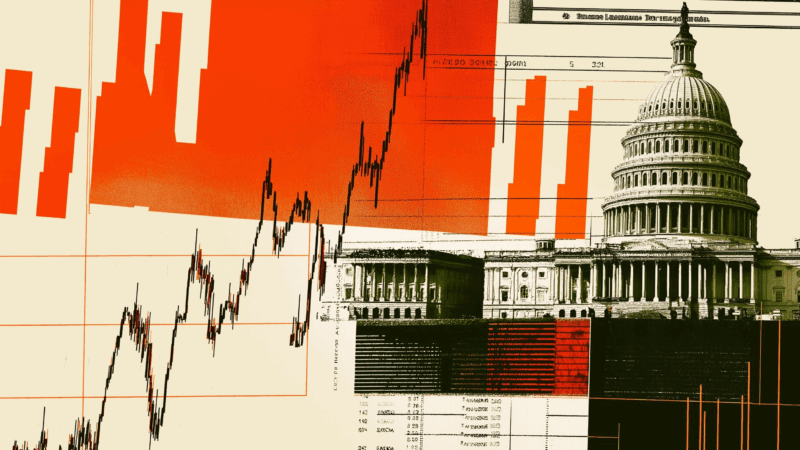Feds Borrowed $1.3 Trillion in the First 6 Months of This Fiscal Year
That's the highest total outside of the COVID-19 pandemic, and now Congress wants to borrow even more.

President Donald Trump stood before a joint session of Congress less than six weeks ago and vowed to do something that has not been done in nearly a quarter century: balance the federal budget.
New numbers from the Treasury and recent developments in Congress suggest that's not going to happen. Indeed, all indications are pointing in the opposite direction.
The federal government borrowed $1.3 trillion during the first six months of the current fiscal year, the Treasury Department reported last week. That's the second-highest six-month total in history, bested only by the record set in the midst of the COVID-19 pandemic.
Spending is on the rise too. Over the first six months of the fiscal year, the federal government spent more than $3.5 trillion, up from the $3.25 trillion spent during the same six-month period in the previous fiscal year. Year-over-year spending is up by $139 billion during the three months since Trump was inaugurated, according to the Treasury data.
Meanwhile, Congress is moving ahead with a Republican-backed budget plan that could add trillions more to the deficit over the next 10 years.
The budget resolution that moved through both chambers of Congress earlier this month would allow lawmakers to authorize an additional $5.8 trillion in borrowing over the next 10 years. That additional borrowing would be used to offset new spending and the extension of the 2017 tax cuts, with the exact parameters of the budget bill to be decided later. When interest costs are included in the calculation, the budget resolution would add nearly $7 trillion to the deficit, according to the Committee for a Responsible Federal Budget (CRFB).
"The numbers are undeniable. We are racking up debt at an alarming pace, and it's unlikely to end any time soon," said Maya MacGuineas, president of the CRFB, in a press release. "In fact, lawmakers seem hellbent on adding to that sum with trillions of unpaid-for tax cuts and spending increases."
The budget resolution would result in interest costs doubling over the next 10 years. The CFRB estimates that interest payments will consume 27 percent of all federal revenue by 2034—up from just 9 percent in 2021—if the budget resolution is adopted.
Romina Boccia, director of budget and entitlement policy at the Cato Institute, calls the budget resolution a "train wreck" that "actively worsens our nation's debt trajectory."
While spending climbs and Congress eyes even more borrowing, the Trump administration's attempts at cutting government are coming in well short of expectations. Last week Elon Musk of the Department of Government Efficiency (DOGE) reported that he now anticipates DOGE's cuts will produce $150 billion in savings for the current fiscal year—a significant drop from his earlier promises to cut $1 trillion or even $2 trillion.
Cutting waste and fraud from the executive branch is a worthwhile goal, but it should be obvious by now that such efforts are no substitute for actual budget cuts. If the budget resolution would increase borrowing by $7 trillion over 10 years, that's $700 billion annually—or more than four times the amount of savings Musk is now promising to deliver.
In other words, the DOGE's projected savings will not even offset future deficit growth—to say nothing of helping balance the budget.
By definition, you can't balance the budget while borrowing is increasing. It's highly unlikely that borrowing will decrease until spending does—and it's all but impossible if the spending goes while you're also cutting domestic taxes, as Republicans want to do.
Congress and the Trump administration should try to avoid allowing a bad situation to keep getting worse. Until they do that, a balanced budget will be just a fantasy.


Show Comments (56)